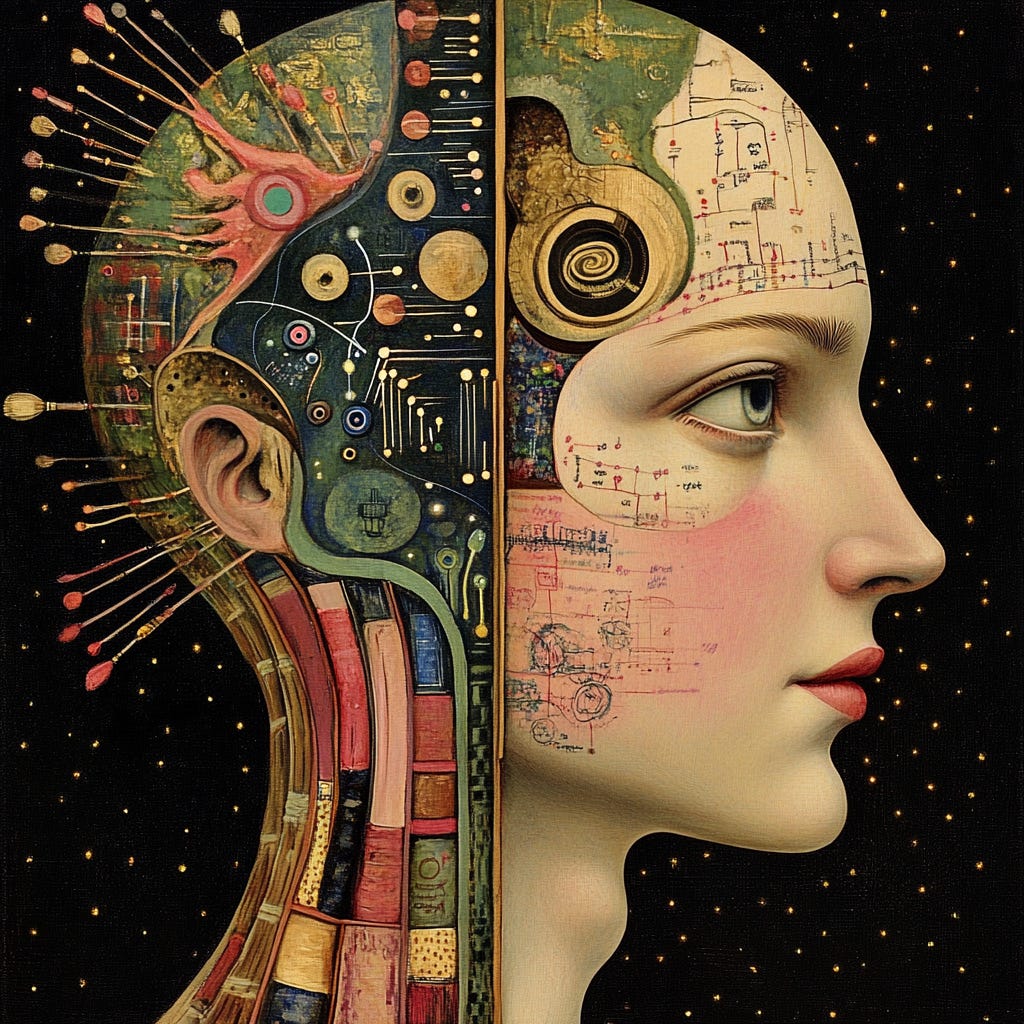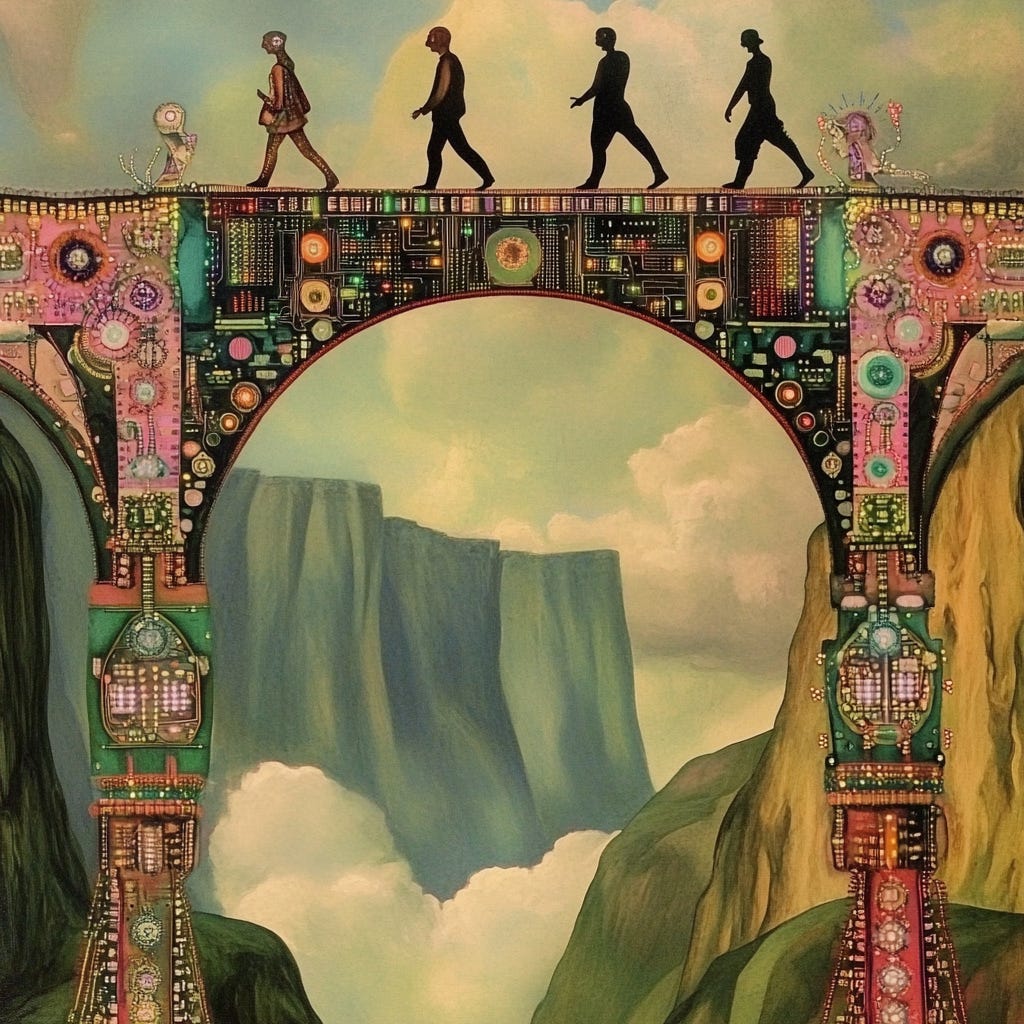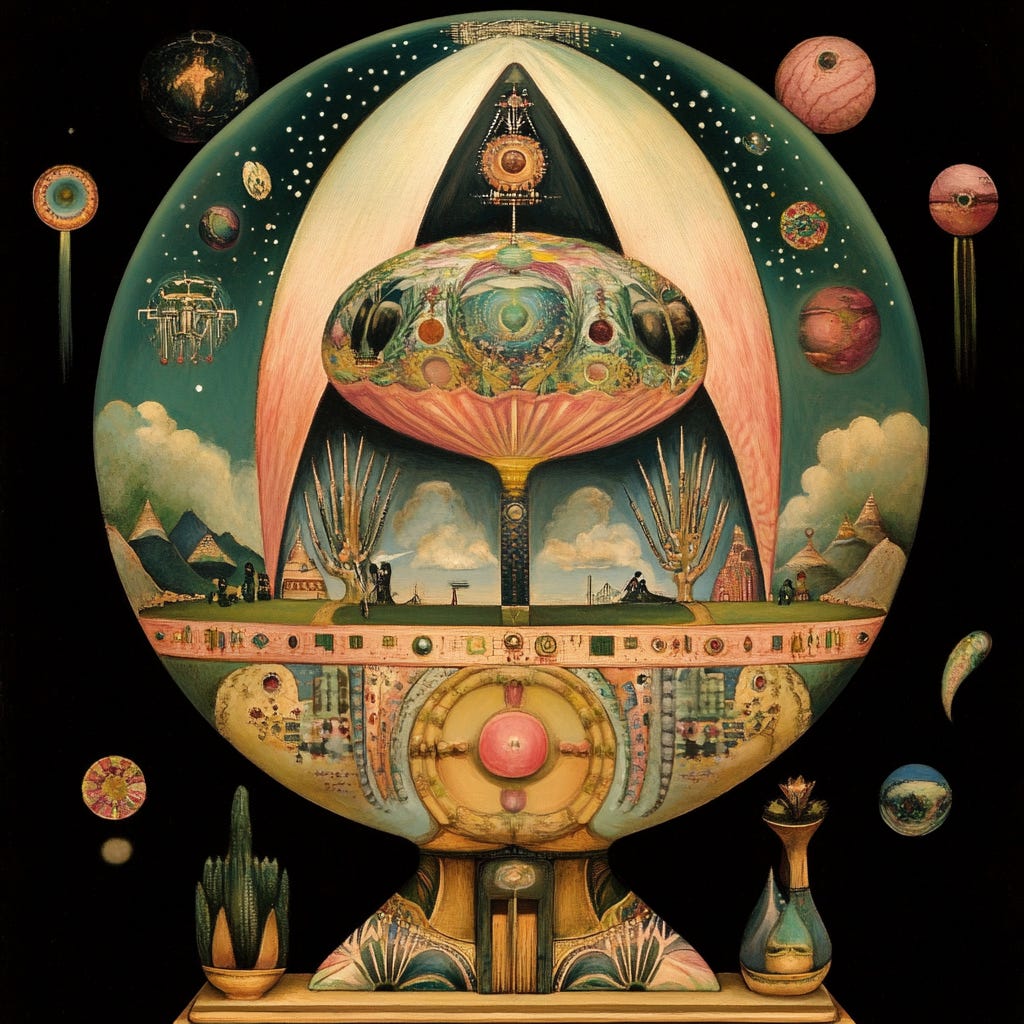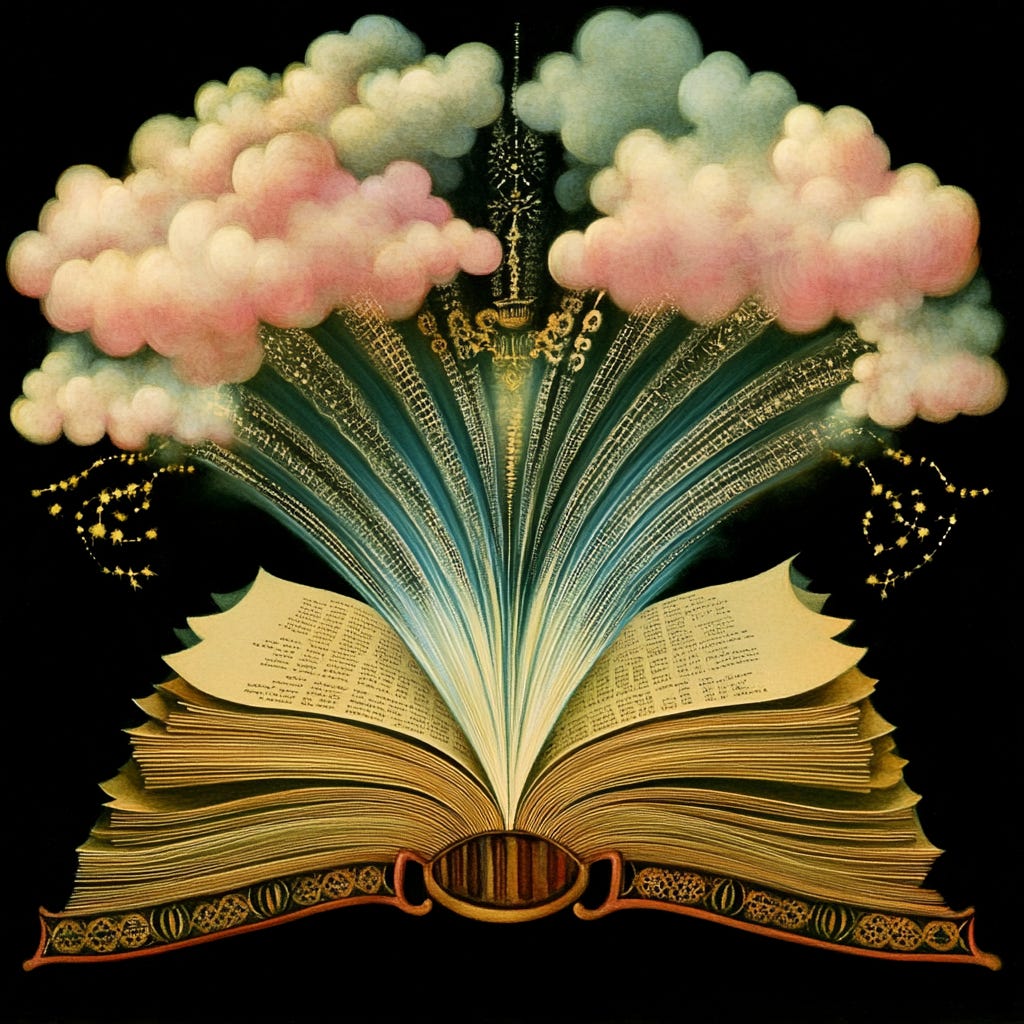If AI can create anything, what does Art mean?
Exploring how AI is redefining creativity, authorship, and the value of art

When I was a kid, I remember sitting cross-legged in front of the TV, watching The Simpsons and thinking, "I hope they never stop making this show." It was 1997, and the idea of endless episodes felt like a dream. Back then, I couldn’t have imagined that The Simpsons would still be running almost 30 years later (though, to be fair, I eventually joined the ranks of those annoying internet nerds who insist that only seasons 1 to 9 are the real classics).
But what if I told my younger self that one day, I could have more of those classic episodes - not by waiting for some miraculous creative resurgence, but by simply asking for them? Thanks to AI, that reality is closer than we think. Soon, we could prompt an AI to generate entire new seasons of old-school Simpsons, episodes that feel like they belong in the dusty corners of the show's golden era. Not just fan fiction, but full animations, voices, scripts - crafted to match my nostalgia-tinted expectations.
This isn’t just about The Simpsons or the strange comfort of reliving our favorite childhood shows. It’s about the future of creativity itself. We are approaching a world where anyone can generate custom music, films, or books, crafted to their personal tastes. It’s the ultimate form of personalized entertainment - a dream come true, but one that raises profound questions. What happens when creation becomes instant, effortless, and deeply personal? What do we lose when art is made on demand, tailored to individual whims rather than collective culture? And if we can generate our own private masterpieces, will they hold the same meaning?
This article explores the historical evolution of creative tools, the rise of AI-generated art, and the ethical and cultural implications of this new era. It’s a journey from the printing press to prompt engineering, asking what it means to create, to share, and to connect through art in a world where anyone can generate anything.

1. The evolution of creativity: from printing press to digital revolution
Throughout history, technological advancements have continually reshaped the landscape of creative expression, progressively lowering barriers and empowering individuals to share their voices. In the mid-15th century, Johannes Gutenberg's invention of the movable type printing press revolutionized the dissemination of knowledge. Prior to this innovation, reproducing written materials was labor-intensive and costly, limiting access primarily to the elite. Gutenberg's press enabled mass production of books and other texts, significantly reducing costs and making literature accessible to a broader audience. This democratization of knowledge played a pivotal role in increasing literacy rates and fostering an informed society. The widespread availability of printed materials also facilitated the spread of new ideas, contributing to significant cultural and intellectual movements such as the Renaissance and the Reformation.
The advent of photography in the 19th century and the subsequent development of film introduced new mediums for artistic expression and storytelling. Photography allowed individuals to capture real-life moments, preserving them for posterity and enabling a new form of personal and artistic expression. Similarly, film combined visual imagery with narrative, creating a powerful medium for storytelling that was both accessible and engaging. These technologies lowered the barriers to visual art, allowing more people to participate in and appreciate creative endeavors. The transition from traditional chemical processes to digital photography further enhanced accessibility, enabling instant image capture and distribution.
The late 20th century ushered in the digital revolution, characterized by the proliferation of personal computers and the internet. These advancements transformed creative industries by providing individuals with unprecedented access to content creation and distribution tools. Platforms such as blogs, social media, and video-sharing websites enabled users to publish writings, music, videos, and more, leading to an explosion of user-generated content. This shift not only lowered the barriers to entry for creators but also diversified the types of content available, reflecting a broader range of voices and perspectives. The digital revolution democratized creativity by allowing anyone with internet access to share their work with a global audience, fundamentally changing the dynamics of media consumption and production.
Each of these milestones has progressively lowered the barriers to creative expression, allowing more individuals to participate in the arts and share their perspectives. As we continue to integrate new technologies like artificial intelligence into creative processes, it is essential to consider both the opportunities they present and the implications they hold for the future of human creativity.

2. The advent of AI in creative processes
The emergence of generative artificial intelligence signifies a pivotal transformation in creative expression. Unlike past technological advancements that primarily enhanced human creativity by providing new tools, AI introduces a more autonomous approach. Systems like OpenAI's GPT, MidJourney, and Suno, trained on vast datasets, can independently generate original art, music, and literature based on simple prompts. This evolution is not just about lowering skill barriers; it’s about redefining the act of creation itself. AI can now replicate and reinvent styles, raising critical questions about authorship, originality, and the role of human intention in art.
AI-generated works are also gaining recognition within traditional artistic spaces. In 2018, Christie's auctioned Edmond de Belamy, an AI-generated portrait, for $432,500 - far exceeding expectations and signaling a cultural shift in how art is valued. More recently, in 2025, Christie's hosted its first AI-only auction, showcasing the diversity and complexity achievable through generative models. AI-composed music has similarly reached mainstream audiences, with some tracks amassing millions of streams. These examples suggest a growing acceptance of AI-created art and a blurring of the line between human and machine-made creativity.
However, this rise also invites significant ethical concerns. The issue of ownership is contentious, as many artists argue that AI models have been trained on their work without consent, raising complex debates about intellectual property and exploitation.
To address these ethical concerns, clearer guidelines could be established for how AI models are trained, ensuring transparency and consent from original creators. Additionally, compensation models - similar to royalty systems - could provide financial recognition to artists whose work contributes to AI datasets. Industry standards for labeling AI-generated content could also enhance transparency, allowing audiences to better understand and value the origin of creative works.

3. Bridging the gap between concept and creation
Traditionally, the journey from an initial creative idea to a finished work was marked by an intensive process of skill development, experimentation, and refinement. Artists would spend years mastering their crafts, not just to execute technical skills but to imbue their work with personal meaning, emotion, and cultural relevance. This slow and deliberate approach contributed to a deep connection between creator and creation, where the process itself was as valuable as the final outcome.
AI has fundamentally altered this dynamic by accelerating the transition from concept to creation. With AI tools capable of generating detailed outputs from simple prompts, individuals without formal artistic training can now produce sophisticated works. AI can automate processes like sketching, color grading, and composition in visual arts, or melody and harmony creation in music. While this immediacy opens new doors for creative expression and accessibility, it also poses a philosophical challenge: If anyone can create "art" without investing time and effort into mastering a craft, how does this change our perception of artistic value?
Moreover, the abundance of AI-generated content could lead to a saturation of the creative landscape, where quantity overshadows quality. If the creative process becomes primarily about prompting and selecting rather than crafting and refining, does it risk diminishing the perceived value of art itself? This shift necessitates a broader reevaluation of artistic merit, encouraging us to question whether the emotional depth and personal investment traditionally associated with art are still essential in this new era.
In essence, while AI bridges the gap between concept and creation, it simultaneously introduces new complexities. It challenges the historical understanding of creativity as a product of struggle, mastery, and personal narrative, pushing us to reconsider what gives art its value in a world where creation is effortless and immediate.
To preserve the value of human artistry, creative education could place greater emphasis on cultivating emotional depth, cultural context, and craftsmanship. Additionally, integrating AI literacy into artistic curricula would empower creators to collaborate with AI effectively, using it as a tool for inspiration rather than a substitute for skill. Communities and platforms that celebrate human-created art processes can also foster appreciation for traditional artistic mastery, helping to maintain the cultural significance of effort and refinement.

4. Personalization versus shared cultural experiences
In the mid-20th century, mass media such as television, radio, and print publications played a pivotal role in shaping collective cultural experiences. Programs like the moon landing broadcast in 1969 or popular sitcoms like I Love Lucy served as communal touchpoints, fostering a shared cultural consciousness. These events and shows were consumed simultaneously by vast audiences, creating a unified narrative thread that contributed to societal cohesion.
The advent of artificial intelligence has transformed content consumption through personalized experiences. AI algorithms analyze user behavior, preferences, and interactions to curate content tailored to individual tastes. Streaming services like Netflix and Spotify utilize AI-driven recommendation systems to suggest movies, shows, or music that align with a user's past consumption patterns. While this personalization enhances user engagement and satisfaction, it can lead to isolated consumption patterns, as individuals become confined to content silos that reinforce their existing preferences.
Looking ahead, AI's capabilities extend beyond curation to the creation of custom content. Individuals may soon generate personalized music, series, and movies, aligning precisely with their preferences. While this democratizes content creation, it raises concerns about the erosion of shared cultural touchstones that have traditionally fostered social cohesion.
In conclusion, while AI offers unprecedented personalization in content creation and consumption, it challenges the balance between individual preferences and shared cultural experiences. Navigating this landscape requires conscious efforts to design AI systems that promote diversity, encourage exploration beyond individual preferences, and uphold ethical standards, thereby preserving the shared experiences that bind communities together.

5. Ethical and philosophical considerations
The integration of artificial intelligence into creative processes has sparked complex ethical and philosophical debates, particularly concerning authorship, originality, and the essence of creativity. A central ethical issue is the question of authorship in AI-generated art. Traditional notions of creativity are deeply tied to human experience and intention. However, when AI systems generate art, music, or literature, determining who holds the copyright becomes contentious. Some argue that the user inputting prompts should be considered the author, while others believe that the AI developers or even the AI itself could hold rights. The U.S. Copyright Office has maintained that works lacking human authorship are not eligible for copyright protection, underscoring the legal complexities surrounding AI-generated content.
The rise of AI in creative fields also prompts reflection on the nature of creativity itself. While AI can produce works that mimic human art, critics argue that AI lacks consciousness and emotional depth, essential components of genuine creativity. Musician Jimmy Page has expressed concern that AI-generated art, which relies on existing human works, lacks the authentic essence of true artistry and often exploits creators without consent or compensation. This perspective challenges the value of AI-produced art and its place within the broader cultural landscape.
Drawing a parallel to the music industry, the practice of sampling - reusing portions of existing recordings - played a pivotal role in the development of hip-hop. Artists like DJ Kool Herc and Grandmaster Flash innovatively repurposed sounds, leading to the birth of a new genre. This creative reuse faced legal challenges but ultimately contributed to a rich cultural movement, suggesting that integrating existing works can lead to novel art forms. Similarly, AI-generated art, which often draws from extensive datasets of human creations, raises questions about originality and the transformative nature of art.
The environmental impact of AI technologies is another ethical dimension to consider. The energy consumption associated with training large AI models contributes to carbon emissions, raising questions about the sustainability of widespread AI adoption in creative industries. However, some studies suggest that AI systems may emit significantly less CO₂ per page of text or image generated compared to human writers or illustrators, challenging assumptions about AI's environmental footprint. Balancing technological advancement with environmental stewardship remains a critical challenge.
Philosophically, the advent of AI-generated art compels a reevaluation of what it means to be creative and, by extension, what it means to be human. If machines can produce art, music, and literature, does this diminish the uniqueness of human creativity? Some argue that true creativity involves consciousness, intentionality, and emotional depth - qualities that AI lacks. This debate touches on broader questions about the role of human experience in art and whether creativity is an exclusively human trait.
The intersection of AI and creativity presents multifaceted ethical and philosophical challenges. As AI continues to evolve, society must grapple with questions of authorship, the essence of creativity, and the potential biases embedded within AI systems.
Establishing industry-wide ethical standards for AI-generated content could mitigate concerns around ownership and exploitation. Simultaneously, promoting sustainable AI models and fostering philosophical dialogue on the evolving meaning of creativity would ensure AI's integration aligns with broader societal values.

6. Speculative Futures
The intersection of human creativity and artificial intelligence opens up speculative futures where the boundaries of art and authorship are fundamentally redefined. One of the most compelling scenarios is that of collaborative creativity, where humans and AI co-create, leading to entirely new hybrid art forms. Artists are already experimenting with AI as a creative partner - feeding algorithms with data, interpreting AI-generated suggestions, and responding to them with their own interventions. In visual arts, artists like Sougwen Chung have collaborated with robotic systems to co-create intricate drawings, blending the unpredictability of human gesture with the precision of machine-generated patterns. In music and performance, AI systems are beginning to adapt to audience reactions in real-time, contributing to dynamic, interactive experiences. These collaborations suggest a future where the creative process becomes less about solitary genius and more about dialogic interaction - between human intuition and machine analysis, chaos and logic, randomness and design.
But the horizon of AI in creativity doesn't end with collaboration. There's an equally compelling, and perhaps more unsettling, possibility: AI functioning as an independent creator. Already, AI systems like Botto have produced original artworks that have sold for millions, challenging the notion that art requires human emotion and intention. As AI models continue to advance, it's conceivable they could generate works that not only rival human-made art but surpass it in complexity, originality, or impact. An AI might one day create literature that resonates deeply, compose music that stirs profound emotions, or design visual experiences that feel entirely alien and new. This raises significant philosophical questions: if creativity becomes detached from human consciousness, how do we define its value? Is creativity an inherently human trait, or can it be measured by the quality and impact of the work, regardless of its source?
These speculative futures would inevitably reshape industries, education, and society's understanding of creativity itself. In industries like design, film, and music, human roles may shift from being primary creators to becoming curators, editors, and guides - those who refine and direct AI-generated content. Educational systems might need to evolve, focusing on teaching students not only artistic skills but also how to effectively collaborate with AI, understanding its strengths and limitations, and curating its outputs into meaningful work. The definition of creativity could expand to embrace not just human expression but also machine-generated aesthetics, forcing society to confront profound questions about authorship, originality, and artistic value. Will AI’s rise diminish the reverence for human-made art, or will it push humans to innovate in ways that machines cannot replicate? The answers will shape not only the future of art but our broader understanding of what it means to create.

Conclusion
Throughout history, technological advancements have consistently reshaped the landscape of creative expression, lowering barriers and empowering individuals to share their voices. From the printing press democratizing access to knowledge, to photography and film expanding artistic expression, and the digital revolution enabling global user-generated content, each leap has fundamentally altered how creativity is conceived, produced, and consumed. Artificial intelligence is the latest, and perhaps most radical, chapter in this ongoing evolution.
AI introduces unprecedented possibilities. It accelerates creation, allows anyone to generate art with minimal expertise, and fosters new forms of hybrid creativity. Yet, it also raises profound questions about ethics, authorship, emotional authenticity, and the potential erosion of shared cultural experiences. These are not just technical or artistic concerns but deep philosophical questions about the essence of creativity and what it means to be human.
Addressing these challenges requires proactive solutions:
Establishing Ethical Frameworks: Clear industry-wide standards must be developed for how AI models are trained, ensuring transparency and consent from creators. Compensation systems, akin to royalty models, could offer fair recognition to artists whose work contributes to AI-generated content.
Promoting Cultural Diversity: AI-driven personalization systems should be designed to introduce diverse and unfamiliar content, encouraging broader cultural engagement. Collaborative AI platforms could also help foster shared creative experiences.
Redefining Creative Education: Educational institutions should integrate AI literacy into artistic curricula while continuing to emphasize the value of human craftsmanship, emotional depth, and cultural relevance.
Encouraging Sustainable AI Development: Innovating towards energy-efficient AI models and promoting awareness of environmental impacts will ensure that creative progress aligns with ecological responsibility.
Shaping Speculative Futures: Creative think tanks and interdisciplinary collaborations can help shape ethical and responsible AI futures, ensuring that human intuition and values guide technological innovation.
Ultimately, the future of creativity will be shaped by how we choose to engage with AI. Will we use it to enhance human expression or to replace it? Will we build systems that prioritize diversity and challenge echo chambers, or ones that reinforce isolation and convenience? The answers will determine whether AI expands creative potential or diminishes it.
As with every technological revolution before it, AI’s impact on creativity will be defined by how we adapt, question, and innovate in response. It is not merely a matter of embracing or resisting the technology but of shaping its role in ways that reflect our values, aspirations, and the diverse expressions of human experience. The creative future is not predetermined—it will be written by those who dare to question, to challenge, and to create alongside the machines.


